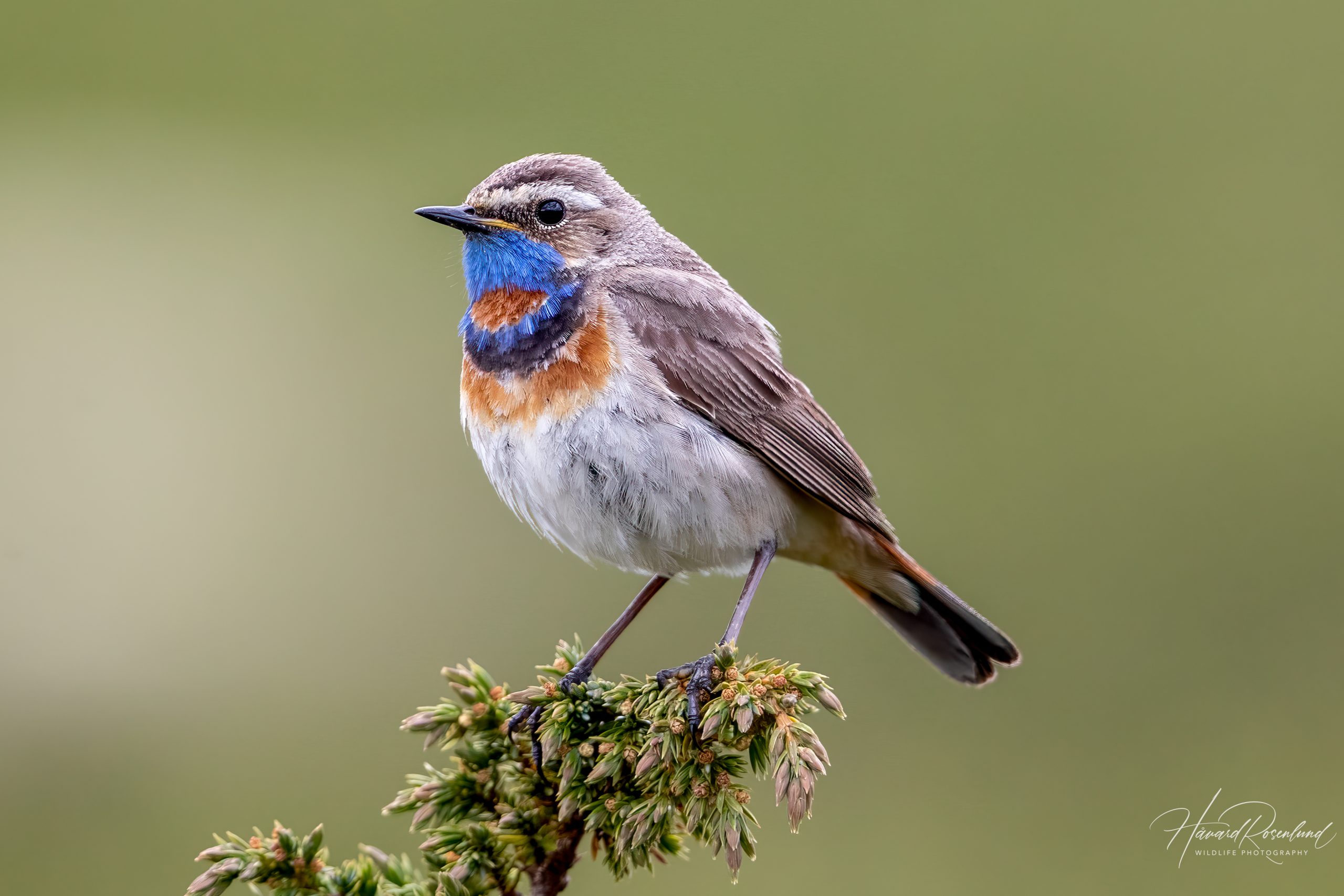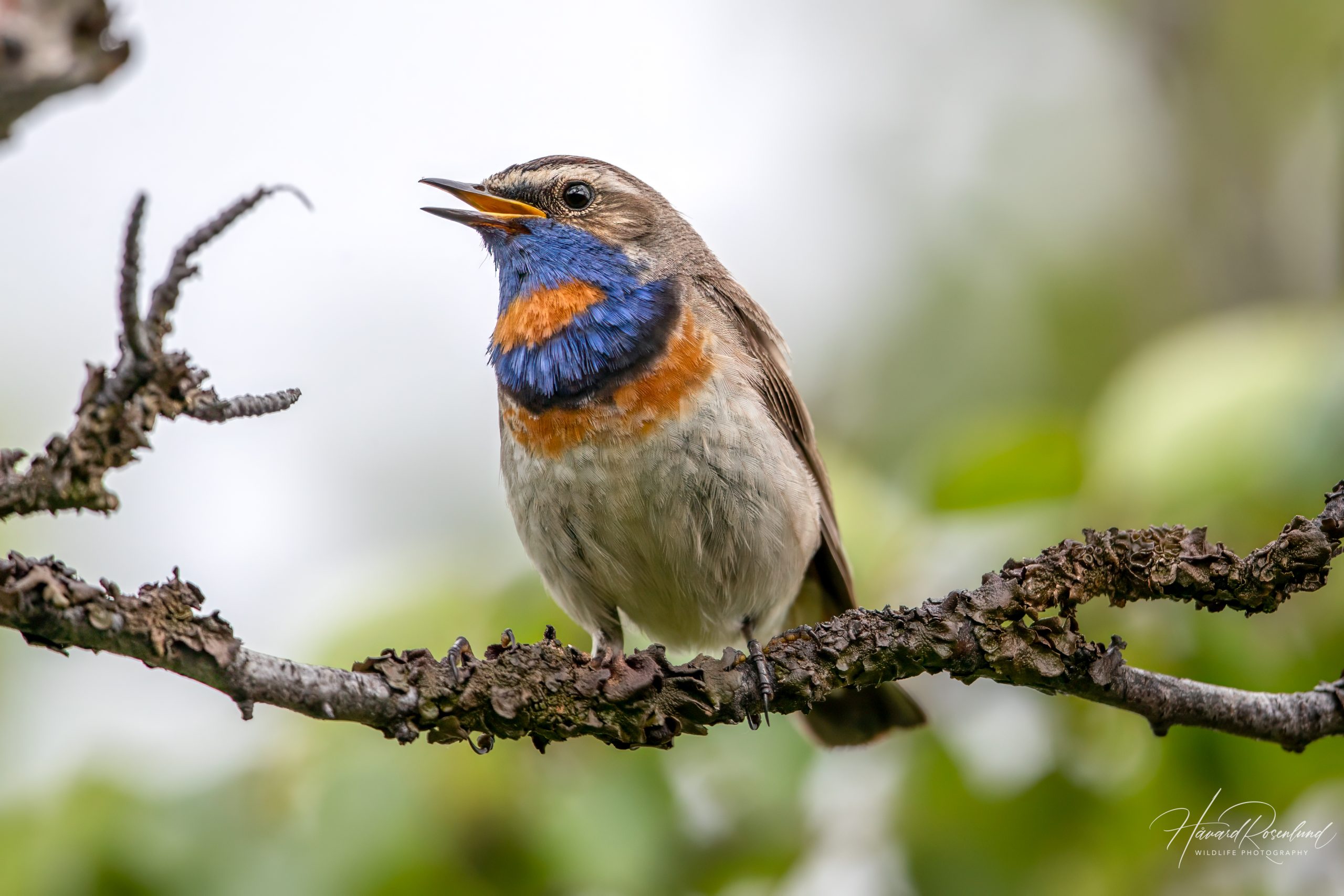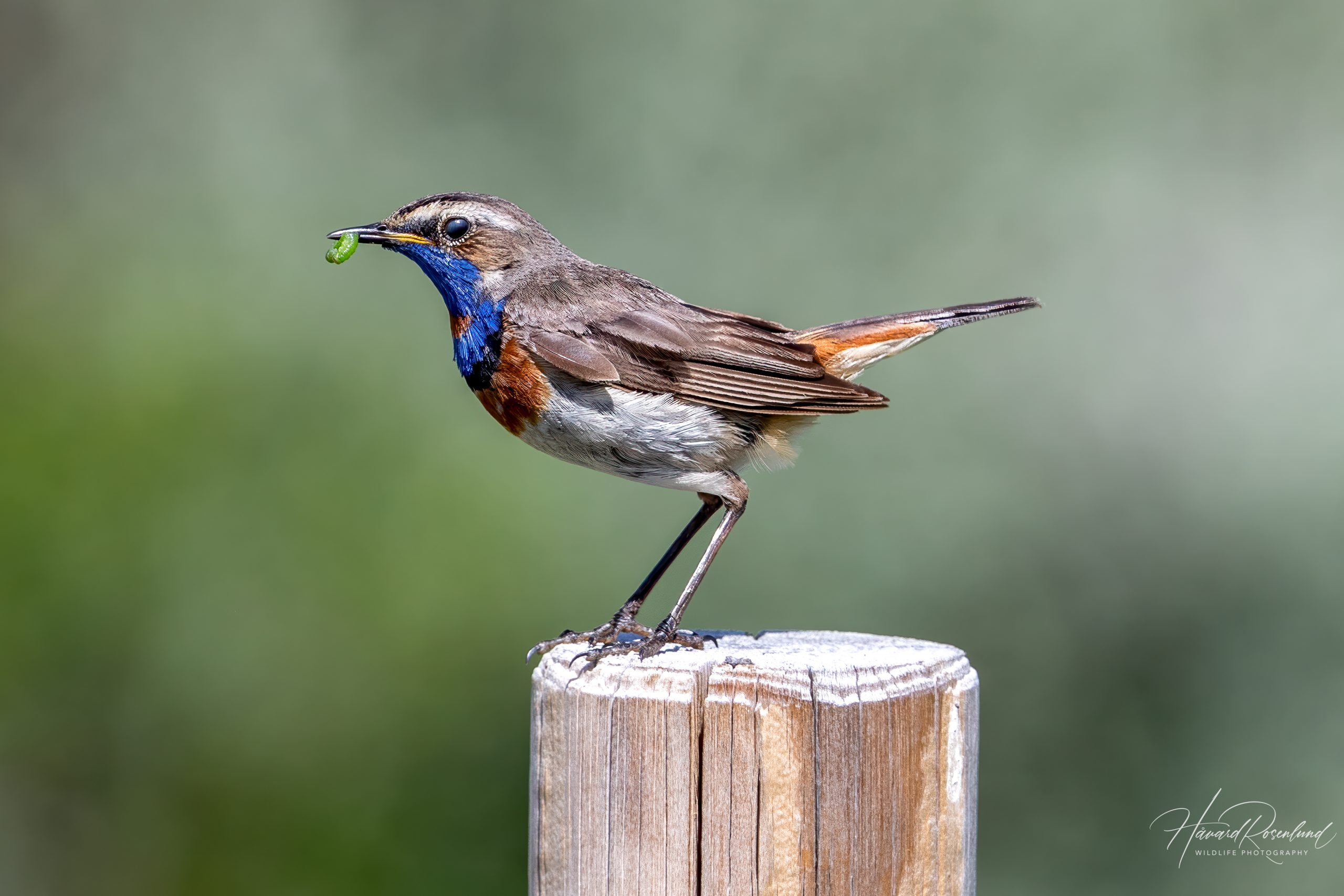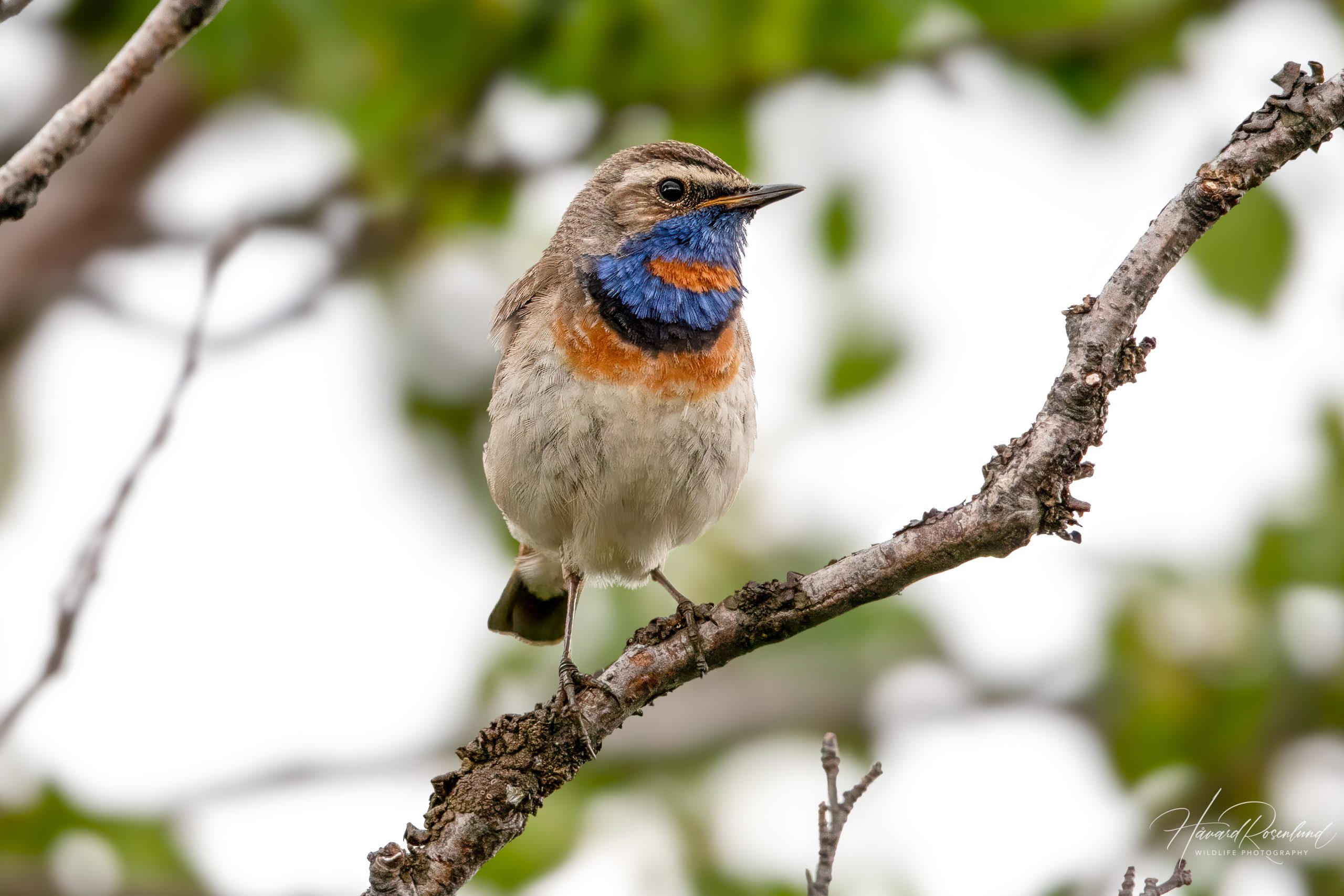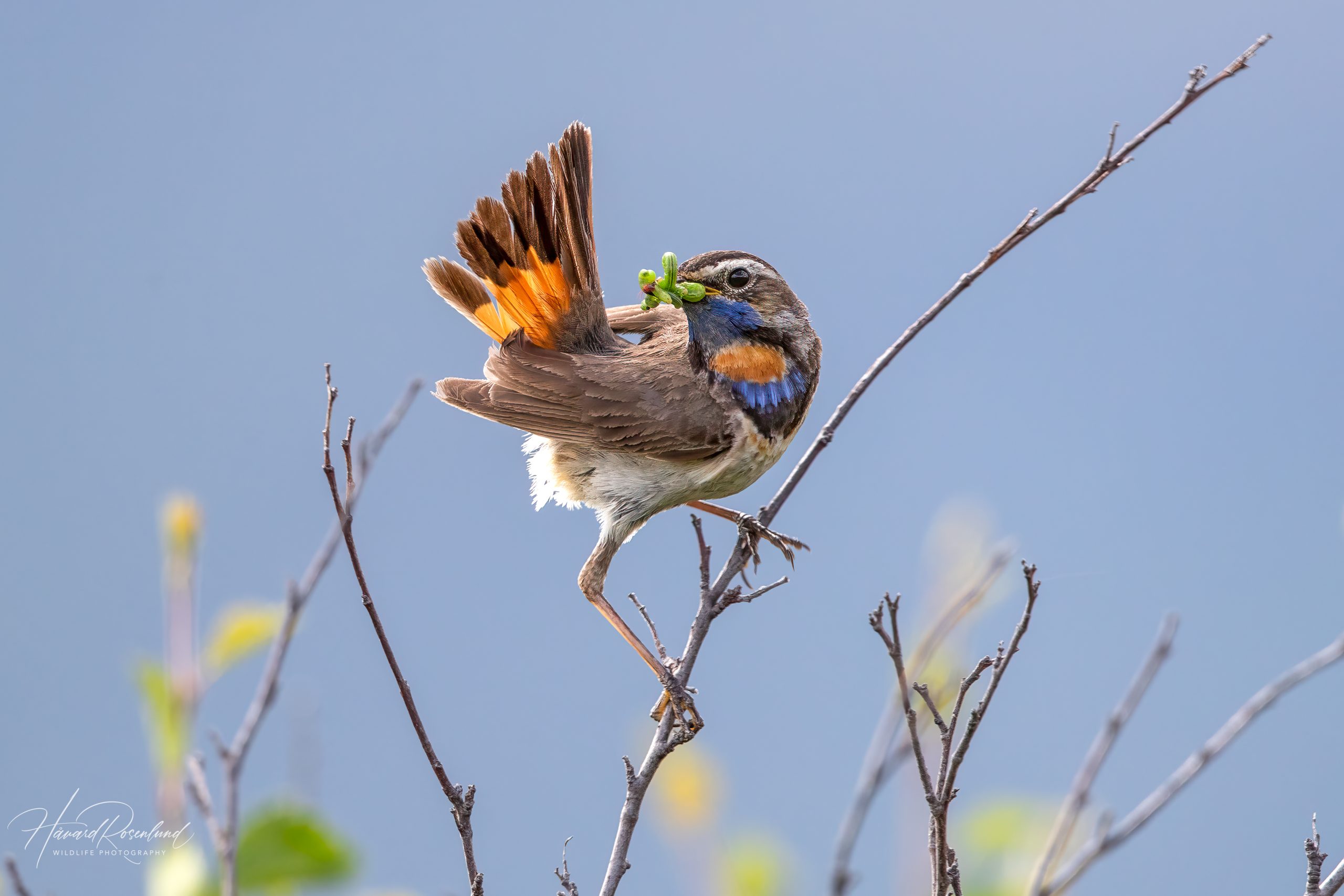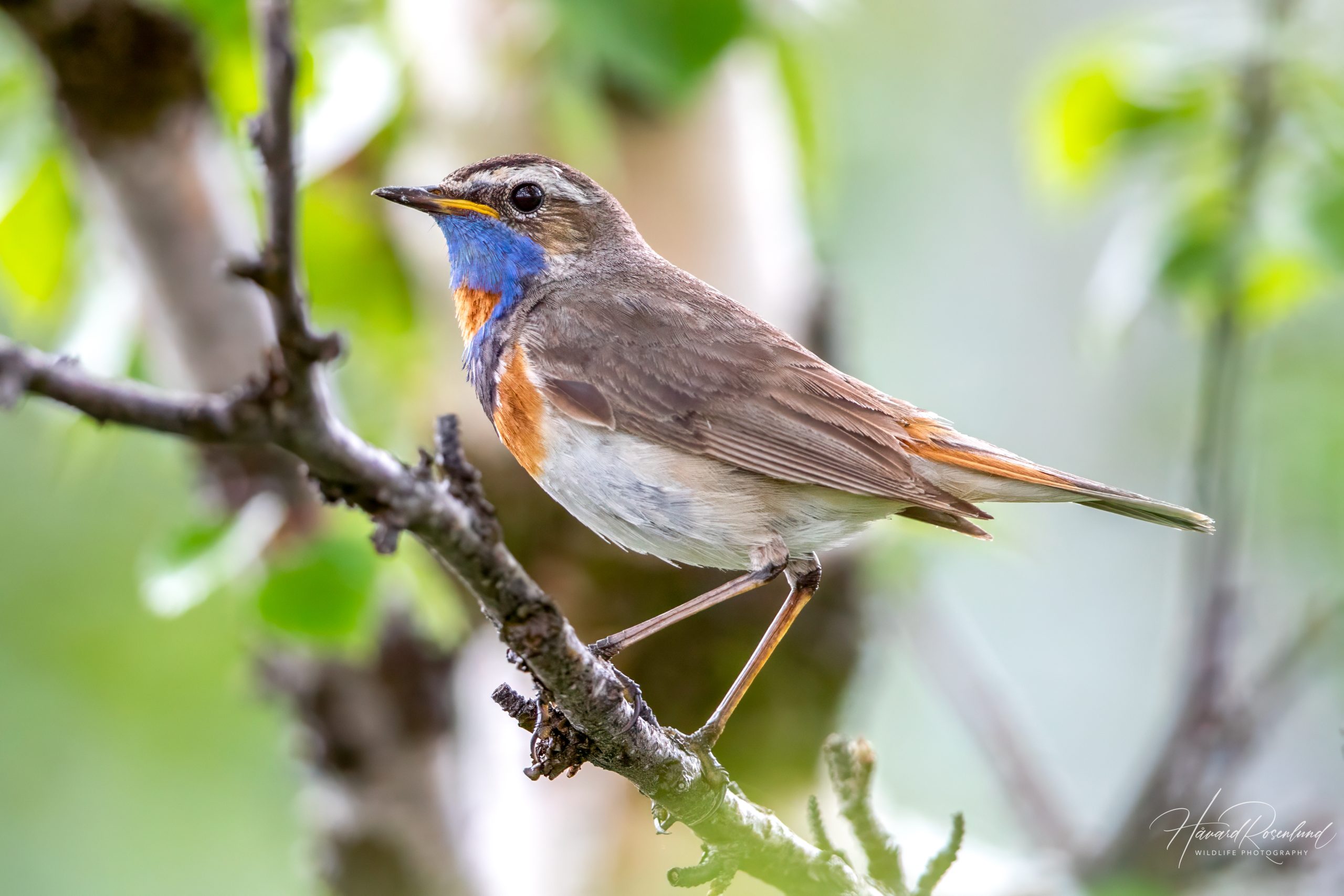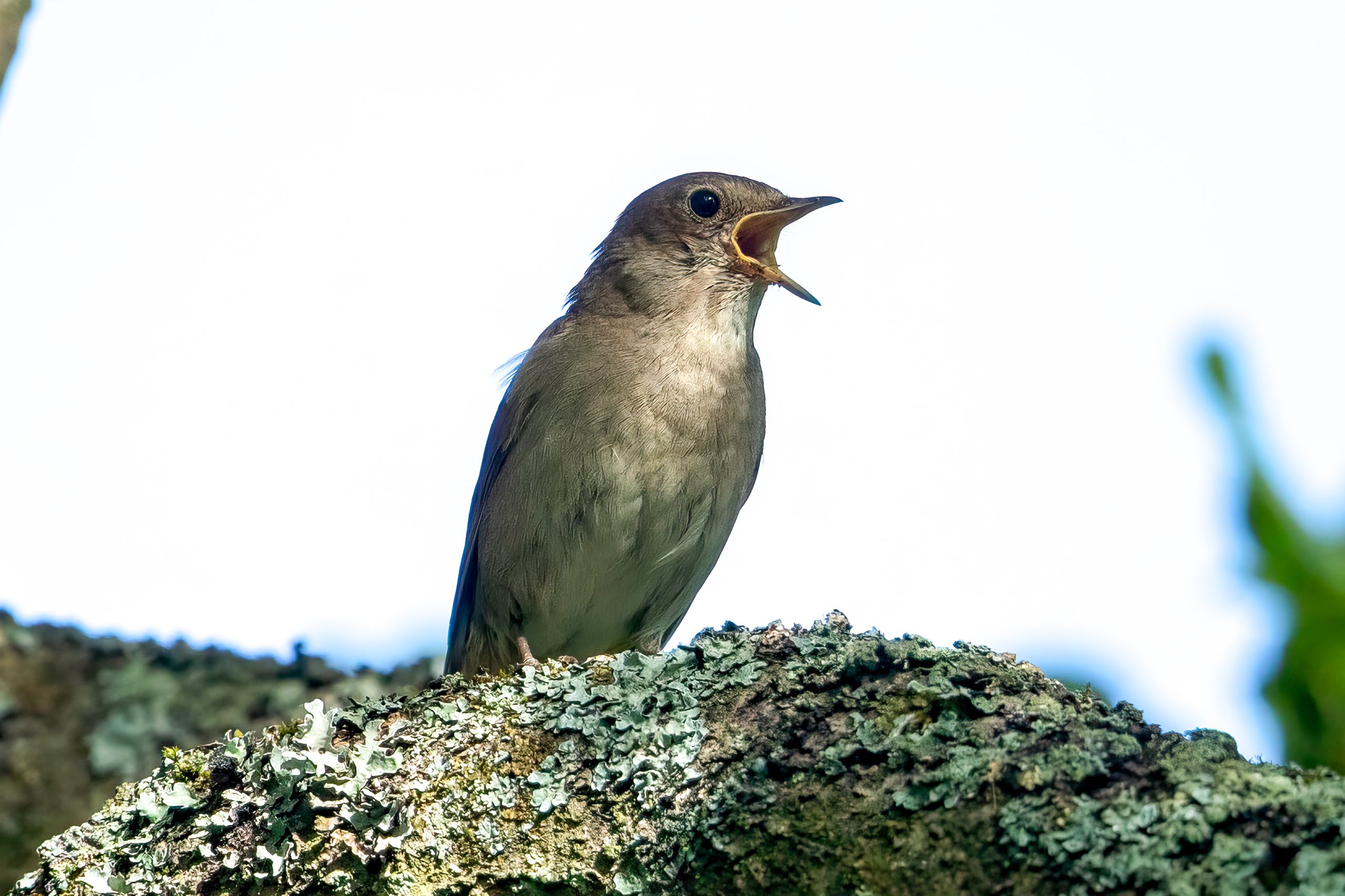Description
The bluethroat (Luscinia svecica) is a small passerine bird known for its striking appearance and melodious song. It has a widespread breeding range across Europe and Asia, often found in wet habitats such as marshes and along riverbanks. Adult bluethroats typically measure about 13-14 cm (5.1-5.5 in) in length, with a wingspan of 20-22 cm (7.9-8.7 in). Males are particularly notable for their vibrant blue throats, adorned with a red or white spot in the center, which they display prominently during the breeding season. Females and juveniles are less colorful, featuring a more subdued brown plumage with hints of blue and red.
Diet & habitat
Bluethroats are typically found in dense, moist habitats such as reed beds, shrublands, and wet meadows. They favor areas with abundant cover and proximity to water, which provides ample food resources and nesting sites. These birds are insectivorous, feeding primarily on insects and other small invertebrates. Their diet includes beetles, flies, caterpillars, and spiders, which they often forage for on the ground or among low vegetation. During the autumn and winter months, they may also consume berries and seeds.
Migration
Bluethroats are migratory birds, traveling considerable distances between their breeding and wintering grounds. They breed in northern Europe and Asia, including Scandinavia, and Russia, and migrate southwards to spend the winter in North Africa, the Middle East, and South Asia. Migration typically occurs in two main periods: spring migration from March to May and autumn migration from August to October. These birds are known for their long flights, often covering thousands of kilometers during their seasonal journeys.
Nesting
The breeding season for bluethroats generally begins in late April and extends through June. Males establish territories and attract females through elaborate displays and singing. Once a pair forms, the female constructs a nest, usually a cup-shaped structure made of grass, leaves, and moss, concealed in dense vegetation close to the ground. The female lays a clutch of 4-7 eggs, which she incubates for about 13-15 days. After hatching, the chicks are cared for by both parents and fledge approximately 12-14 days later. During this time, the parents are highly protective and attentive, ensuring the survival of their young.
Status
The bluethroat is classified as least concern on the IUCN Red List. Although their populations are generally stable, they face threats from habitat destruction and degradation, particularly in their breeding and wintering areas. Conservation efforts aimed at preserving wetland habitats and mitigating the impacts of climate change are essential for ensuring the continued health of bluethroat populations.




